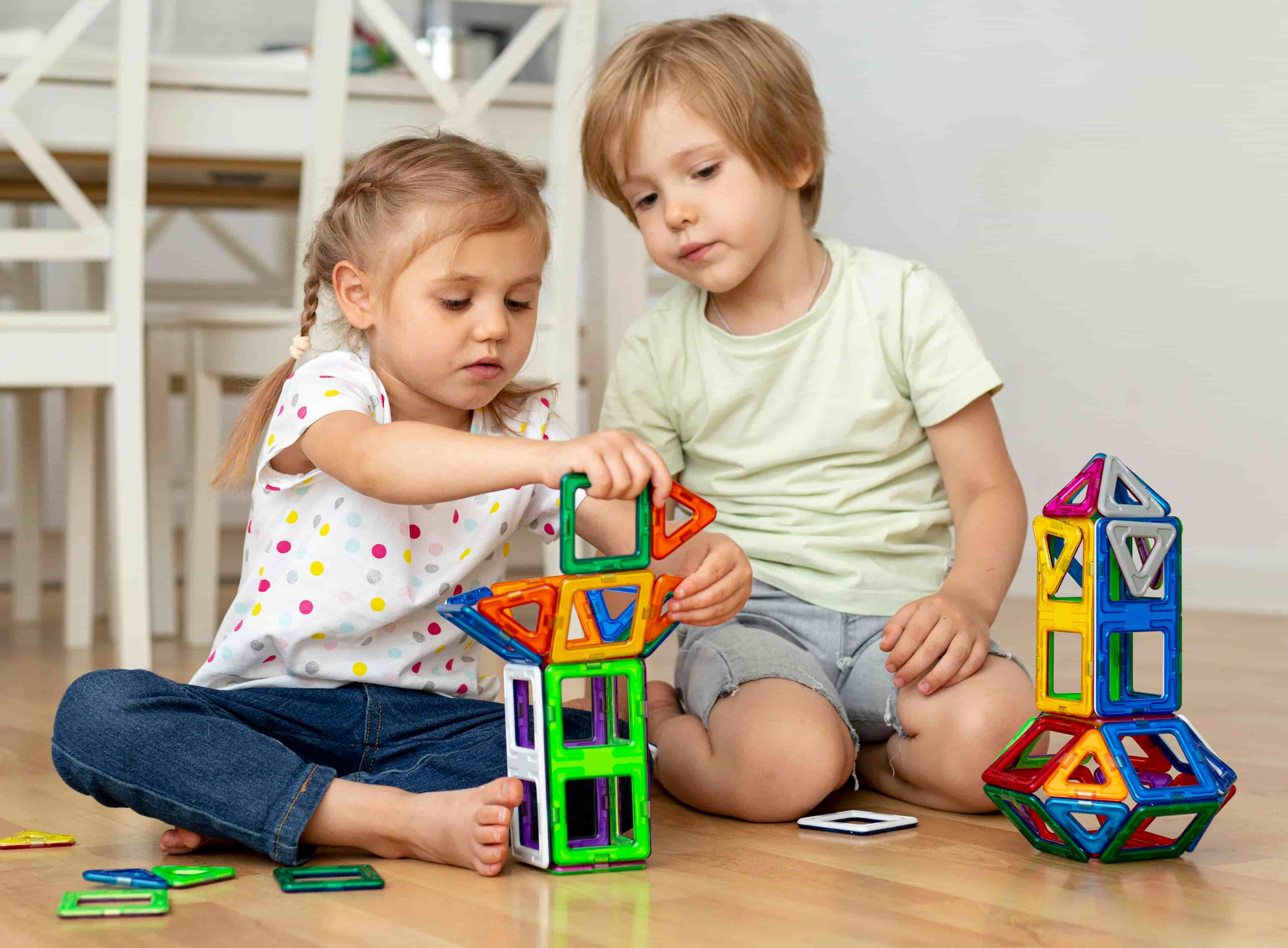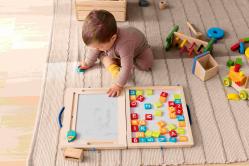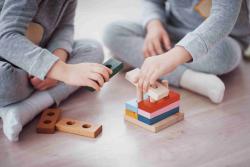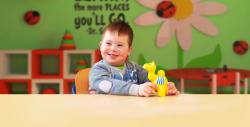Welcome to the exciting world of toys, where imagination takes flight and play becomes a powerful tool for growth and development! Choosing age-appropriate toys is like finding the perfect key to unlock a child's potential.
In this article, we'll explore why selecting the right toys is crucial, the perils of inappropriate choices, and guide you through the delightful journey of age-appropriate toys.
Importance of Choosing Age-Appropriate Toys
Toys are more than just playthings; they are essential companions on a child's journey of discovery. Age-appropriate toys are specifically designed to align with a child's developmental stage, ensuring a harmonious blend of fun and learning.
The Power of Age-Appropriate Toys
Role of Play in Child Development:
Play is the magical gateway through which children explore the world and acquire essential skills. It nurtures their cognitive, social, emotional, and physical development. Toys act as catalysts, igniting their imagination and fueling their growth.
Dangers of Inappropriate Toys:
While the toy aisle can be a treasure trove of wonders, it's vital to be aware of the risks associated with inappropriate toys. Let's dive into two significant dangers:
-
Health Risks:
Children, especially younger ones, are prone to putting things in their mouths. Toys with small parts can pose choking hazards. To ensure safety, always consider the age recommendations provided by trusted sources, like Toys"R"Us, to avoid potential harm.
-
Developmental Risks:
Toys that are too simple or too complex for a child's age can impede their growth. Simple toys may fail to challenge their cognitive abilities, while overly complex ones can lead to frustration and a lack of interest. Opting for age-appropriate toys ensures an optimal balance, fostering continuous development.
Tips for Choosing Age-Appropriate Toys
1. Keep Toys Simple:
In a world of flashing lights and electronic gadgets, simplicity can be a breath of fresh air. Simple toys ignite the spark of imagination, allowing children to create endless adventures. Choose toys like building blocks, wooden puzzles, and playsets that inspire open-ended play.
Remember, the simplest toys often hold the greatest potential for creativity and problem-solving.
For example, a set of colorful building blocks can transform into a towering castle or a bustling city. A classic jigsaw puzzle challenges children to piece together a picture and develop spatial awareness. These toys not only entertain but also nurture essential skills in a fun and engaging way.
2. Limit Electronic Toys and Video Games:
While electronic toys and video games have their place in the modern world, it's crucial to establish a healthy balance. Excessive screen time can hinder a child's social interaction, physical activity, and imagination. Encourage a diverse play experience by limiting the use of electronic toys and video games.
It is recommended that children aged 2-5 years should have no more than one hour of screen time per day. Instead, encourage outdoor play, creative arts and crafts, and interactive play with peers. This helps develop their fine and gross motor skills, social interactions, and imaginative thinking.
3. Don't Fall for Toys That Call Themselves Educational:
Educational toys have gained popularity in recent years, but not all of them live up to their claims. Many toys marketed as "educational" simply offer passive learning experiences or rely heavily on screens. Instead, seek out toys that engage children in active play, hands-on exploration, and problem-solving challenges.
For example, construction sets, science kits, and art supplies stimulate creativity and critical thinking. Toys that encourage children to explore and experiment, such as building robots or conducting simple science experiments, provide genuine educational value.
4. Keep Only a Few Toys Out at One Time:
A cluttered play area can overwhelm children and limit their ability to focus and engage deeply with their toys. To prevent chaos and promote a sense of order, consider implementing a toy rotation system. Keep only a few toys out at a time, while the rest are stored away. Rotate the toys periodically to keep the play experience fresh and exciting.
For instance, you can have a selection of building blocks, a puzzle, and a pretend play set available this week, and then switch them out for a different set of toys the following week. This not only maintains a neat play area but also revitalizes the child's interest in their toys, leading to more engaged and imaginative play.
Benefits of Age-Appropriate Toys
Choosing age-appropriate toys provides a multitude of benefits for children's development:
1. Enhance Cognitive Development:
Age-appropriate toys stimulate curiosity, problem-solving skills, and logical thinking. Children engage in activities that challenge their minds, helping them develop cognitive abilities that lay the foundation for academic success.
2. Encourage Creativity and Imagination:
By providing toys that allow open-ended play and self-expression, children can unleash their creativity and imagination. Toys like art supplies, building blocks, and pretend play sets inspire them to invent, create, and explore new worlds.
3. Promote Physical Development:
Toys that involve physical activity, such as bicycles, sports equipment, and outdoor playsets, contribute to the development of gross motor skills, coordination, balance, and overall physical fitness.
4. Develop Social and Emotional Skills:
Age-appropriate toys offer opportunities for children to engage in cooperative play, role-playing, and sharing. Through these experiences, they develop essential social and emotional skills, such as empathy, communication, problem-solving, and building positive relationships.
Suggestions for Toys at Different Age Groups
- 0-6 months:
- Characteristics of Infants:
During this stage, infants are fascinated with movement, sounds, and simple black and white visuals. They are discovering their bodies and the world around them.
- Suggested Toys for Infants:
Toys that help them explore their senses and develop hand-eye coordination are ideal. Consider toys such as rattles, teethers, unbreakable mirrors, board books with high contrast images, soft stuffed animals, and textured balls. These toys engage their senses and stimulate their developing abilities.
- 6-12 months:
- Characteristics of Infants Aged 6-12 Months:
At this age, infants are becoming more mobile and developing fine motor skills. They are starting to grasp objects and move around independently.
-
Suggested Toys for Infants Aged 6-12 Months:
Toys that encourage exploration and movement are ideal. Consider toys like activity gyms with hanging toys, push toys that provide support during walking, balls for rolling and crawling after, blocks for stacking, simple shape-sorters, and activity boards with buttons and levers to manipulate. These toys support their physical development and stimulate their growing curiosity.
-
1-2 years:
-
Characteristics of Toddlers:
Toddlers in this age range are becoming more independent and developing more advanced fine motor skills. They are learning to walk, run, and climb.
-
Suggested Toys for Toddlers Aged 1-2 Years:
Toys that encourage problem-solving and imaginative play are ideal. Consider toys like stacking and nesting toys, simple puzzles with chunky pieces, ride-on toys for active play, dolls with basic accessories for pretend play, play food for imaginative kitchen adventures, musical instruments for creative expression, and simple building blocks for constructing structures. These toys promote cognitive and social development while nurturing their growing imagination.
-
2-3 years:
-
Characteristics of Toddlers Aged 2-3 Years:
Preschoolers in this age group are developing language and social skills. They are becoming more imaginative and creative.
-
Suggested Toys for Toddlers Aged 2-3 Years:
Toys that encourage pretend play and socialization are ideal. Consider toys like dress-up clothes and costumes, play kitchens with utensils and play food, play tools for imaginative construction, dolls with accessories for nurturing play, art supplies for creative expression, and building sets with larger pieces for building structures. These toys support their expanding language abilities, social interactions, and imaginative play.
-
3-5 years:
-
Characteristics of Preschoolers:
Children in this age group are developing more complex language and social skills. They are becoming more interested in learning and problem-solving.
-
Suggested Toys for Preschoolers Aged 3-5 Years:
Toys that encourage creativity, exploration, and imagination are ideal. Consider toys like art supplies for drawing and painting, building sets with smaller pieces for more intricate designs, science kits for hands-on experiments, musical instruments for musical exploration, puzzles with increasing difficulty levels, and books for storytelling and language development. These toys stimulate their cognitive abilities, foster creativity, and promote a love for learning.
By selecting age-appropriate toys that align with children's developmental stages, we provide them with the tools they need to explore, learn, and grow. So let the journey of play begin, as we embrace the joy and wonder of age-appropriate toys!
Safety Considerations
When selecting age-appropriate toys, it's essential to prioritize safety. Here are some key considerations:
1. Toy Safety Standards:
Ensure that the toys you choose comply with safety standards set by organizations such as the Consumer Product Safety Commission (CPSC) and ASTM International. Look for labels that indicate compliance with safety regulations.
2. Common Toy Hazards to Watch Out For:
Be aware of potential hazards such as small parts that could pose a choking hazard, sharp edges or points, toxic materials, and cords or strings that could pose strangulation risks. Carefully inspect toys for any potential safety concerns before giving them to your child.
3. Tips for ensuring safe play:
-
Read and follow the age recommendations and warnings on toy packaging.
-
Regularly inspect toys for wear and tear, and replace damaged toys.
-
Keep toys with small parts away from younger siblings to prevent choking hazards.
-
Follow the instructions for assembly and use of toys.
-
Avoid toys with loud noises that could damage your child's hearing.
Remember, it's not about the number of toys, but the quality and appropriateness that matters. Engage in meaningful playtime with your child, encourage their curiosity, and celebrate their achievements. And always prioritize safety to ensure a joyful and safe play experience.
Frequently Asked Questions:
Q: What if my child doesn't show interest in age-appropriate toys?
A: Every child is unique, and their interests may vary. Observe their preferences and adapt the play experience accordingly. Sometimes, children may need a little encouragement and guidance to explore new toys and activities.
Q: How many toys should parents keep out for a child to play with at one time?
A: It's best to keep only a few toys out at a time to prevent overwhelm and promote focused play. Consider rotating toys periodically to keep the play experience fresh and exciting.
Q: Can my child play with toys that are too advanced for their age?
A: It's important to provide toys that align with your child's developmental stage to ensure safety and optimal learning. Toys that are too advanced may frustrate them or pose safety risks. However, supervised play with slightly more challenging toys can be beneficial for growth and learning.
Q: How often should I rotate my child's toys?
A: The frequency of toy rotation can vary based on your child's interests and attention span. Generally, rotating toys every few weeks or monthly can keep the play experience exciting and help maintain their engagement.
Q: Are electronic toys appropriate for young children?
A: While some electronic toys can provide educational value when used in moderation, it's important to prioritize a balanced play experience. Excessive screen time at a young age can hinder physical activity, social interaction.
 Free Delivery On Orders Over ₹ 999
Free Delivery On Orders Over ₹ 999 Order By 6Pm For Next Day Delivery!
Order By 6Pm For Next Day Delivery!








The information below is required for social login
Sign In
Login
Login With OTP
Login With Email
Verify your phone number
OTP has been sent to
Resend OTP
Or
By continuing, you agree to ToysRus’s Conditions of Use and Privacy Notice.
Create New Account